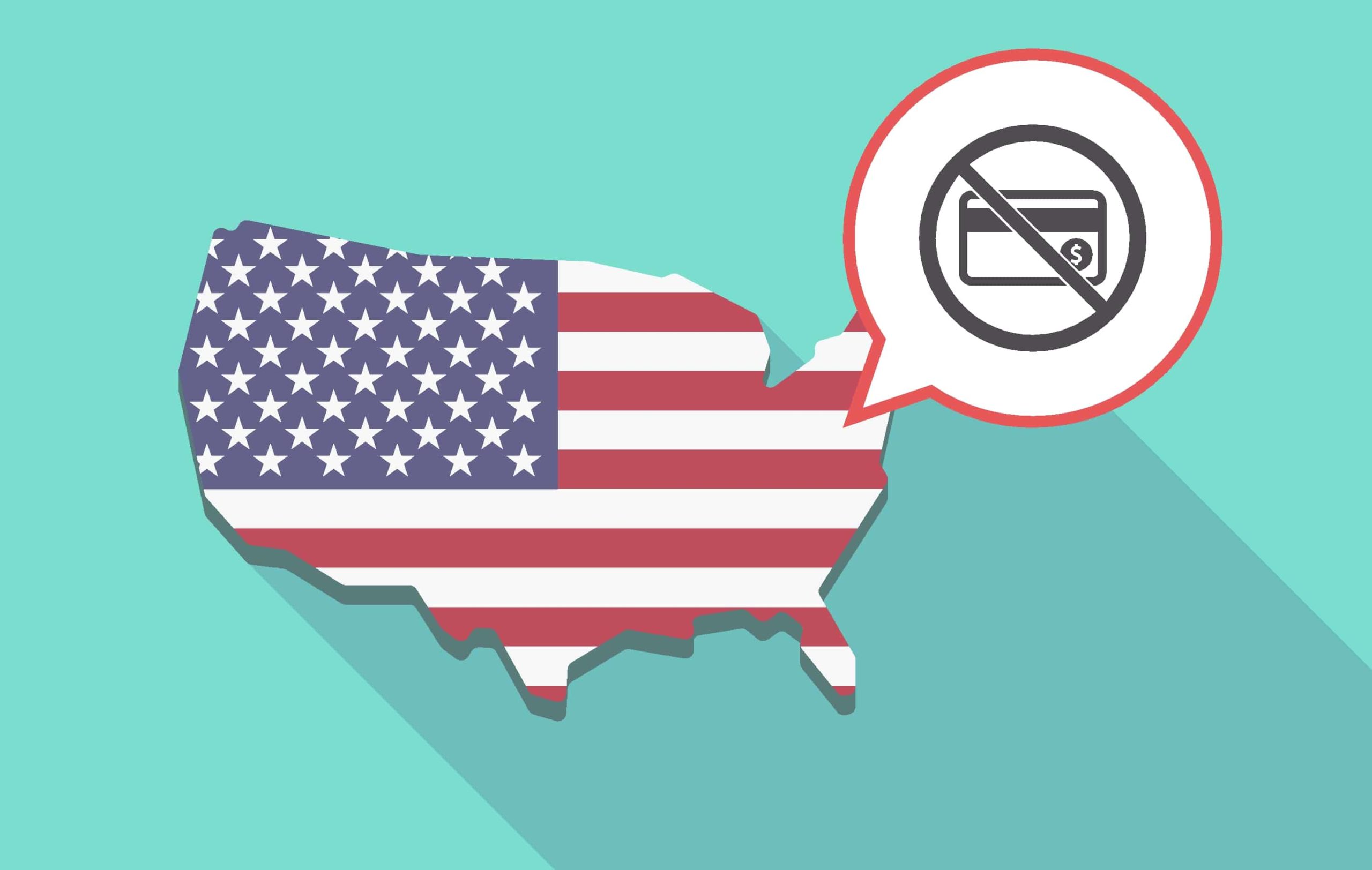Whether your state ranks high or low on average individual credit card debt, if you’re carrying a balance on your credit card — or even multiple cards — you’ve got plenty of company.
Credit card balances in the U.S. rose by $26 billion to $870 billion in the fourth quarter of 2018, according to the Federal Reserve Bank of New York’s Center for Microeconomic Data Quarterly Report.
Total U.S. household debt rose by $32 billion to $13.54 trillion in the last quarter of 2018. That figure is a whopping $869 billion higher than the last peak of $12.68 trillion in 2008.
U.S. consumers average around $6,445 in credit card debt, according to 2018 data from major credit bureau Experian.
Wondering how your state ranks?
Here you’ll find how each U.S. state and the District of Columbia stacks up when it comes to average individual credit card debt in 2018, according to data from major credit bureau Experian.
We’ll also give you steps to take if you’re ready to get rid of credit card debt and stop paying interest on high balances that can haunt you for years.
Here’s how each state ranks in average individual credit card debt.
| State | Ranking | Average individual credit card debt last quarter of 2018* | Average individual credit card debt last quarter of 2017* | % increase or decrease |
| Alaska | 1 | $8,174 | $8,171 | 0.04% |
| New Jersey | 2 | $7,511 | $7,404 | 1.45% |
| Connecticut | 3 | $7,490 | $7,410 | 1.08% |
| District of Columbia | 4 | $7,457 | $7,224 | 3.22% |
| Virginia | 5 | $7,351 | $7,235 | 1.60% |
| Maryland | 6 | $7,304 | $7,178 | 1.75% |
| Texas | 7 | $7,091 | $6,986 | 1.50% |
| Hawaii | 8 | $6,973 | $6,741 | 3.44% |
| Georgia | 9 | $6,937 | $6,809 | 1.88% |
| New York | 10 | $6,887 | $6,763 | 1.83% |
| Florida | 11 | $6,818 | $6,662 | 2.34% |
| Delaware | 12 | $6,710 | $6,608 | 1.54% |
| Colorado | 13 | $6,684 | $6,586 | 1.49% |
| New Hampshire | 14 | $6,612 | $6,513 | 1.52% |
| Illinois | 15 | $6,594 | $6,509 | 1.31% |
| Massachusetts | 16 | $6,571 | $6,408 | 2.54% |
| California | 17 | $6,544 | $6,342 | 3.19% |
| Nevada | 18 | $6,537 | $6,388 | 2.33% |
| Rhode Island | 19 | $6,511 | $6,470 | 0.63% |
| Washington | 20 | $6,440 | $6,309 | 2.08% |
| Arizona | 21 | $6,393 | $6,263 | 2.08% |
| South Carolina | 22 | $6,220 | $6,092 | 2.10% |
| Pennsylvania | 23 | $6,197 | $6,116 | 1.32% |
| North Carolina | 24 | $6,180 | $6,079 | 1.66% |
| Oklahoma | 25 | $6,152 | $6,064 | 1.45% |
| Louisiana | 26 | $6,130 | $6,049 | 1.34% |
| New Mexico | 27 | $6,128 | $6,111 | 0.28% |
| Wyoming | 28 | $6,123 | $6,065 | 0.96% |
| Kansas | 29 | $6,091 | $6,013 | 1.30% |
| Alabama | 30 | $6,008 | $5,908 | 1.69% |
| Tennessee | 31 | $5,974 | $5,874 | 1.70% |
| Missouri | 32 | $5,911 | $5,832 | 1.35% |
| Utah | 33 | $5,905 | $5,797 | 1.86% |
| Ohio | 34 | $5,903 | $5,850 | 0.91% |
| Vermont | 35 | $5,784 | $5,733 | 0.89% |
| Minnesota | 36 | $5,754 | $5,662 | 1.62% |
| Oregon | 37 | $5,751 | $5,630 | 2.15% |
| Montana | 38 | $5,722 | $5,653 | 1.22% |
| Michigan | 39 | $5,718 | $5,659 | 1.04% |
| Maine | 40 | $5,697 | $5,637 | 1.06% |
| Nebraska | 41 | $5,676 | $5,614 | 1.10% |
| Arkansas | 42 | $5,663 | $5,613 | 0.89% |
| Indiana | 43 | $5,563 | $5,514 | 0.89% |
| North Dakota | 44 | $5,502 | $5,395 | 1.98% |
| West Virginia | 45 | $5,494 | $5,441 | 0.97% |
| Idaho | 46 | $5,469 | $5,420 | 0.90% |
| Kentucky | 47 | $5,462 | $5,395 | 1.24% |
| South Dakota | 48 | $5,459 | $5,378 | 1.51% |
| Mississippi | 49 | $5,398 | $5,263 | 2.57% |
| Wisconsin | 50 | $5,255 | $5,229 | 0.50% |
| Iowa | 51 | $5,065 | $5,008 | 1.14% |
| U.S. Average Credit Card Debt 2018 | $6,445 | 1.82% | ||
| U.S. Average Credit Card Debt 2017 | $6,330 |
*Source: Experian. The analysis results provided are based on an Experian-created statistically relevant aggregate sampling of its product database from the fourth quarter of 2018 and 2017. Different sampling parameters may generate different findings compared with other similar analysis. Analyzed credit files did not contain personal identification information.
Top Five States with Highest Average Individual Credit Card Debt
1. Alaska: $8,174
This state’s number one ranking isn’t surprising since living in Alaska can be pricey. In fact, Alaska has the 8th highest cost of living among U.S. states, according to the 2018 Missouri Economic Research and Information Center (MERIC) cost of living index.
You’ll pay more for groceries in Alaska, up to $10 for a gallon of milk and up to $10 for a pound of chicken, for example. Add in higher-than-average gasoline prices and expensive rent (a 1BR apartment in Anchorage ranges from $900 to $1,600) plus the fact that the average price for a single-family home in 2018 was $326,000, and you’ve got a recipe for pulling out the plastic when short on cash.
2. New Jersey: $7,511
MERIC ranks New Jersey as one of America’s most costly states in which to live, with the 11th highest cost of living. You’ll pay up to $20 for a meal at an inexpensive restaurant, up to $1,200 a month for childcare for one child and up to $2,600 for a 3BR apartment, according to Numbeo. The average homeowner pays around 70% of his or her income toward the mortgage.
3. Connecticut: $7,490
Connecticut’s cost of living in the 9th highest in the U.S., according to MERIC. In fact, the state’s housing costs are among the highest in the U.S., according to the U.S. Department of Housing and Urban Development (HUD) Office of Policy Development and Research.
4. District of Columbia: $7,457
Living in the Washington, D.C. is far from affordable, since this federal territory (not state) ranks #2 as having the highest cost of living in the nation and the second-highest housing costs when compared with the 50 states, according to MERIC. You’ll also pay a lot more for groceries in here than in most other parts of the U.S.
5. Virginia: $7,351
Virginia isn’t in MERIC’s top ten highest cost of living states, but this East Coast state isn’t what you’d call affordable, either. The median cost for condos and houses is around $300,000, according to the Virginia Association of REALTORS®. Groceries are high too, up to $3 for a dozen eggs or $10 for a pound of chicken, in Richmond.
Bottom 5 States with Lowest Individual Credit Card Debt
1. Iowa: $5,065
Maybe it’s all those Iowans growing their own corn and tomatoes combined with this state’s low cost of living, but MERIC ranked Iowa as the 13th most affordable state to live in. Since the median cost for a single-family home is only $149,000, perhaps it’s a little easier to keep credit card debt low in the Hawkeye State.
2. Wisconsin: $5,255
Let’s face it. Living in a flyover state is cheap. Like Iowa, the Dairy State is in the Midwest, one of the most affordable regions of the country in which to live, according to MERIC. Maybe that’s one of the reasons that people in Wisconsin, on average, are able to keep their credit card debt under $5,300.
3. Mississippi: $5,398
Along with states in the Midwest, southern states such as Mississippi are among the least expensive places to live. In fact, MERIC ranked this state as having the lowest cost of living of any U.S. state. The median cost of a home in Mississippi, is $128,000, according to Zillow.
4. South Dakota: $5,459
This northern state falls in the middle (#27) of MERIC’s cost of living rankings, so residents of South Dakota are doing something right when it comes to managing credit card debt.
5. Kentucky: $5,462
Like Mississippi, this state is nestled in the more affordable South, where the cost of living is significantly less expensive than on the East and West Coasts. It’s not surprising, then, that Kentucky residents on average don’t let their credit card debt spiral out of control.
Ready to dig yourself out of credit card debt?
Here’s how to get started.
No matter where you reside, no place is worse than living in a state of perpetual debt.
If you’re tired of being weighed down by credit card debt, it may be time to start tunneling your way to the light of a zero balance, or at least a balance you can pay off every month.
You don’t have to be a genius to figure out how to get rid of credit card debt. You do, however, have to commit to a goal to pay off debt and work hard to get it done.
Here are some tips for paying down credit card debt so you can get a leg up on managing your finances.
Contact a credit counseling agency.
A credit counseling agency may be able to help you pay off creditors with a debt management plan where you pay one monthly payment to the agency, which then pays your creditors. Generally, when the lowest creditor is paid off, your payment remains the same but the extra amount is added to the next lowest creditor, and so on.
Proceed cautiously, however. There are many unscrupulous companies advertising debt relief that charge fees and even make false promises about their ability to wipe out a portion of your credit card debt.
Instead, seek out a non-profit credit counseling agency with certified counselors trained in consumer credit, personal finance, and debt management. Most reputable credit counselors are non-profit, according to the Federal Trade Commission (FTC).
“But be aware that “non-profit” status doesn’t guarantee that services are free, affordable, or even legitimate,” the FTC warns. “In fact, some credit counseling organizations charge high fees, which they may hide. Others might urge their clients to make ‘voluntary’ contributions that can cause more debt.”
Your best bet for finding a reputable credit counselor is to contact a non-profit organization such as the National Foundation for Credit Counseling (NFCC), whose member agencies nationwide offer comprehensive money management services including:
- Credit/debt counseling
- Bankruptcy counseling
- Housing & mortgage counseling
- Reverse mortgage counseling
- Foreclosure prevention counseling
- First-time homebuyer counseling
- Student loan debt counseling
- Debt management plans
- Credit report reviews
- Financial education
You can also find credit counseling programs at many local universities, military bases, housing authorities, and branches of the U.S. Cooperative Extension Service operate non-profit credit counseling programs, according to the FTC.
Once you find a non-profit credit counseling agency you feel comfortable working with, the FTC recommends checking with your state attorney general and local consumer protection agency to find out if any consumers have filed complaints.
For more information about credit counseling and to find a credit counseling agency near you visit www.nfcc.org or contact the NFCC at 800-388-2227.
Contact your credit card company.
You may be able to negotiate a lower interest rate or a payment due date that works better with your pay periods with your credit card issuer.
Create a budget.
Most reputable credit counselors will help you create a monthly budget to better manage your money so you can pay more toward your credit card debt or eliminate it altogether.
Pay more than the minimum payment.
Paying the minimum payment on your credit card statement will keep you from being delinquent and save money on late fees but it will take much longer to pay off the balance.
How much longer? It’s easy to find out.
That’s because the Credit Card Accountability Responsibility and Disclosure (CARD) Act, passed in 2009, is a consumer protection law that requires credit card companies to show a comparison on your credit card statement of how long it will take to pay off your credit card balance if you make only minimum payments versus the payment you must make each month to pay off the balance in three years.
So pay as much over the minimum payment as possible to get rid of credit card debt faster.
Transfer high balances to a 0% APR balance transfer credit card.
You may be able to consolidate one or more of your credit card balances on a balance transfer card that offers an introductory 0% APR for anywhere from six months to 18 months, 21 months or, in some cases, even 24 months. That way, you won’t have to pay any interest until the intro period ends, allowing your payments to apply totally to the balance.
Pay on time to avoid late fees.
The last thing you need is to increase your balance with unnecessary late fees, typically ranging from $30 to $40. To reduce the chance of paying late, sign up with your credit card company for e-mail or text notifications when a payment due date is approaching.
Use your new skills to keep credit card debt low.
Once you get caught up, keep an eye on your credit card balances and try to pay them off every month. That way, you’ll save on interest and reduce the risk of unmanageable credit card debt in the future.
It may be tempting to discard your monthly budget once your credit card debt is under control, but don’t toss it just because you’re feeling confident. Knowing exactly how much money you’ve got coming in and going out each month can go a long way towards staying out of credit card debt for good.



